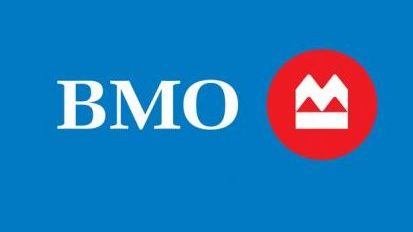According to Banking Canada, Canada’s top five banks hold more than 80% of the market share, while the remaining 25+ banks share the rest.
Each of these “big five” holds billions of dollars under its administration and employs thousands of employees across its business.
Some also consider them notorious for charging high fees, paying little to no interest on deposits and making business decisions that don’t align with climate-related values.
This post will give you an overview of each of these big 5 banks in Canada and highlight some of their shared characteristics.
At the very end, I’ll share with you my personal opinion on the big five and whether I think you should bank with (or invest in) them.
The Top 5 Banks in Canada
First, let’s cover the big five. Who are they, and what are some key stats pertaining to each?
1. Royal Bank of Canada (RBC)
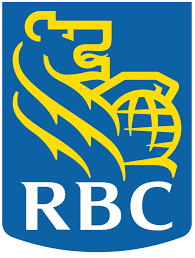
Total Assets and Assets Under Administration: $1.70 trillion* (2022)
Market Capitalization: $185 billion (2022)
Annual Revenue: $49 billion (2021)
Number of Branches: 1600
Number of Employees: 85,000
Founded: 1860s, Halifax
Headquartered: Toronto, Canada
RBC is the largest bank in Canada by market capitalization, annual revenue and total assets. It serves more than 16 million clients, including through its overseas operations, primarily in the United States.
RBC has several subsidiaries. These include the Royal Bank Mortgage Corporation, Royal Mutual Funds Inc., RBC Technology Ventures Inc., Connor Clark Ltd. and more.
The Royal Bank of Canada is traded under the ticker RY on the Toronto Stock Exchange. Its market cap is more than $185 billion (2022).
*All dollar values in this post are indicated in Canadian dollars.
2. Toronto-Dominion Bank

Total Assets and Assets Under Administration: $1.70 trillion (2022)
Market Capitalization: $174 billion (2022)
Annual Revenue: $42 billion (2021)
Number of Branches: 1,100
Number of Employees: 89,000
Founded: 1955, Toronto
Headquartered: Toronto, Canada
TD Canada Trust, the name many Canadian customers are familiar with, is the commercial banking subsidiary of Toronto-Dominion Bank.
Toronto-Dominion Bank serves more than 15 million clients worldwide through its various subsidiaries, including TD Wealth, TD Asset Management, TD Insurance and TD Bank (United States.)
Toronto-Dominion Bank is traded on the Toronto Stock Exchange under the ticker TD. Its market cap is more than $174 billion (2022).
If you’re interested in TD, check out this review of every one of their banking accounts.
3. Bank Of Nova Scotia (Scotiabank)
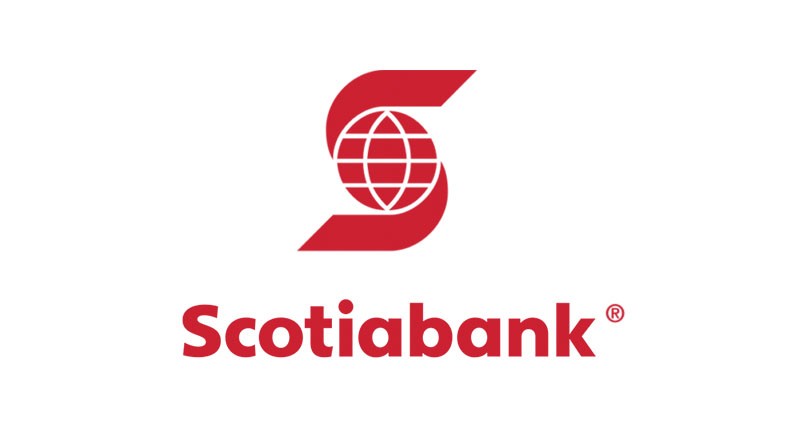
Total Assets and Assets Under Administration: $1.10 trillion (2022)
Market Capitalization: $102 billion (2022)
Annual Revenue: $30 billion (2021)
Number of Branches: 1,000
Number of Employees: 89,000
Founded: 1832, Halifax
Headquartered: Toronto, Canada
Canada’s leading digital bank, Tangerine, is a subsidiary of Scotiabank.
Scotiabank is also well-known for its Scene+ rewards program as well as its great banking products catered towards youth and international students.
You can find Scotiabank on the Toronto Stock Exchange under the ticker BNS.
4. Bank Of Montreal (BMO)
Total Assets and Assets Under Administration: $1 trillion (2022)
Market Capitalization: $91 billion (2022)
Annual Revenue: $26 billion (2021)
Number of Branches: 950
Number of Employees: 44,000
Founded: 1817, Montreal
Headquartered: Montreal, Quebec
BMO is the oldest of the big five banks in Canada.
It operates through three different lines of business: personal and commercial banking, BMO Wealth Management and BMO Capital Markets.
You can find BMO on the Toronto Stock Exchange under the ticker BMO.
5. Canadian Imperial Bank Of Commerce (CIBC)
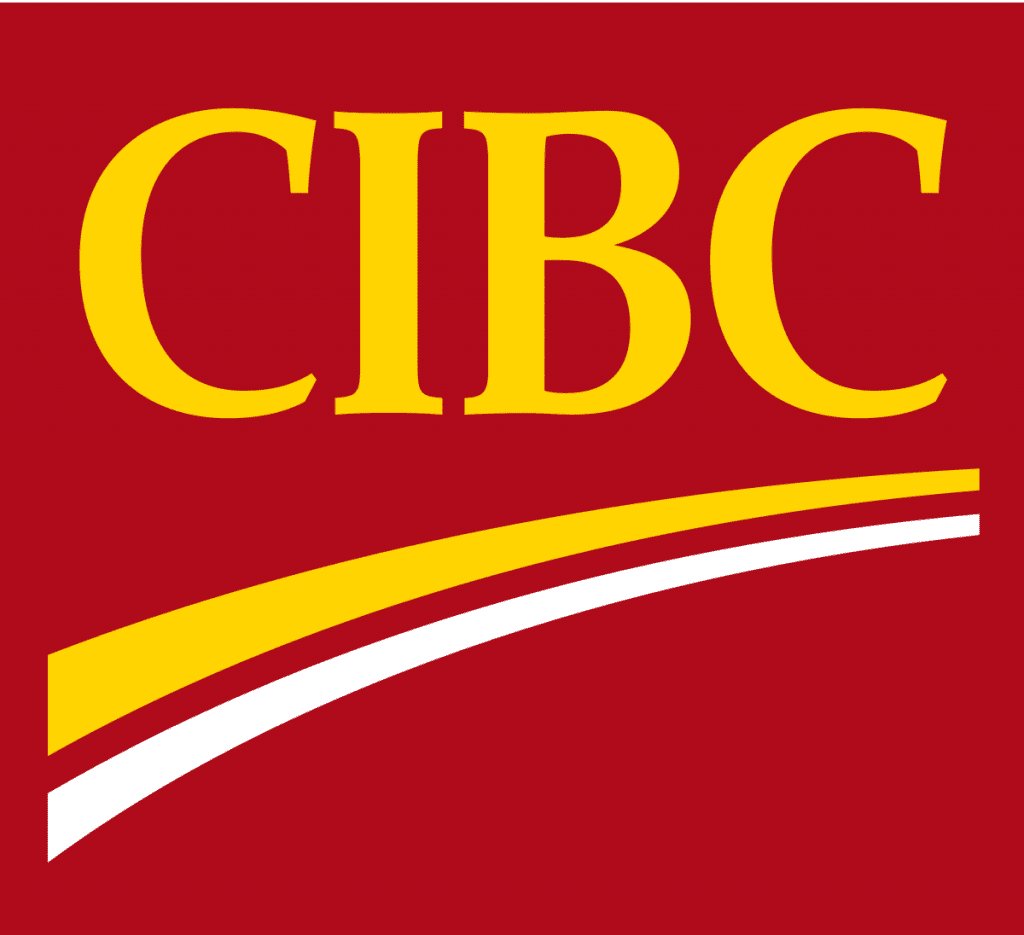
Total Assets and Assets Under Administration: $840 billion (2022)
Market Capitalization: $62 billion (2022)
Annual Revenue: $20 billion (2021)
Number of Branches: 1,050
Number of Employees: 45,000
Founded: 1867, Toronto
Headquartered: Toronto, Canada
Although CIBC has the lowest market capitalization out of the big five, it is still a major financial force in Canada as well as the United States.
It has several subsidiaries under its belt, including services for wealth management, insurance and investments. In addition, one of Canada’s leading digital financial institutions, Simplii Financial, is a trademark and division of CIBC.
You can find CIBC on the Toronto Stock Exchange under the ticker CM.
Read a full review of Simplii Financial here or CIBC’s Investor-Edge here.
Big Five Origins and History
Here are the origins and founding details of these banks:
- Royal Bank of Canada (RBC): RBC was founded in 1864 in Halifax, Nova Scotia, as the Merchants Bank of Halifax. It underwent several name changes over the years, finally becoming the Royal Bank of Canada in 1901. The bank moved its head office to Montreal, Quebec, in 1907.
- Toronto-Dominion Bank (TD): TD was formed in 1955 through the merger of the Bank of Toronto and the Dominion Bank, which were established in 1855 and 1869, respectively. The Bank of Toronto was established by a group of millers and merchants, while the Dominion Bank was founded by a group of entrepreneurs in the aftermath of a gold rush. The bank’s headquarters are located in Toronto, Ontario.
- Bank of Nova Scotia (Scotiabank): Scotiabank was founded in 1832 in Halifax, Nova Scotia, by a group of merchants. The bank’s original purpose was to facilitate the trans-Atlantic trade of the time. It moved its executive offices to Toronto, Ontario, in 1900, although it is still officially headquartered in Halifax.
- Bank of Montreal (BMO): BMO is the oldest of the Big Five banks, founded in 1817 in Montreal, Quebec, by a group of merchants. It was the first bank in Canada and has functioned continuously ever since, serving as the nation’s central bank until the Bank of Canada was established in 1935.
- Canadian Imperial Bank of Commerce (CIBC): CIBC was formed in 1961 through the merger of the Canadian Bank of Commerce and the Imperial Bank of Canada, which were founded in 1867 and 1875, respectively. These banks were established in response to the rapid growth and economic development of Canada at the time. The bank’s headquarters are located in Toronto, Ontario.
Growth and Expansion
The Big Five banks of Canada have grown significantly since their founding. They have expanded their operations both domestically and internationally, and they now offer a wide range of financial services to individuals, businesses, and governments.
For example, the Royal Bank of Canada (RBC) is now the largest of the Big Five banks, with over 16 million clients worldwide. It has operations in 36 countries and offers a wide range of financial services, including personal banking, commercial banking, wealth management, and investment banking.
Similarly, the Toronto-Dominion Bank (TD) has grown significantly in recent years. It now has over 26 million customers worldwide and operates in 15 countries. TD offers a range of financial services, including personal banking, business banking, and wealth management.
The other three Big Five banks – Bank of Montreal (BMO), Canadian Imperial Bank of Commerce (CIBC), and Bank of Nova Scotia (Scotiabank) – have also expanded their operations significantly over the years.
Common Characteristics Of The Big Five Banks In Canada
The big five offer banking accounts to Canadian residents from a monthly $5 fee all the way up to $30 for “premium features.”
Nearly all of them will waive this fee with a “minimum balance.” I have seen minimum balances of up to $5,000 or $6,000 with some of these banks, meaning that if you hold that amount in your account for the entirety of a month, you will get your monthly fee waived.
The big five also offer various products ranging from insurance, loans, mortgages, investments and more.
Their savings accounts, unfortunately, offer little to no interest, especially ever since the coronavirus pandemic, unlike Canada’s digital banks.
Because competition is high, most of the products the big five offer are incredibly similar. You can expect a similar range of products, rates and services across the board.
The big five also all have a similar number of branches and ATMs across the country as well as decent mobile banking features. As such, access is relatively easy with all of these banks, especially given that their resources are vast.
Branches and ATMs
Each bank has its own unique branch and ATM network, so it’s essential to check which one is closest to you. For example, TD Bank has over 1,100 branches and 3,300 ATMs across Canada, making it the bank with the most extensive network.
On the other hand, Bank of Montreal (BMO) has over 900 branches and 4,000 ATMs across the country, making it the bank with the second-largest network.
In addition to branches, the Big Five Banks also have extensive ATM networks. You can use your bank’s ATM to withdraw cash, check your account balance, and deposit cheques. Some banks also offer surcharge-free ATM networks, which means you can use another bank’s ATM without incurring any fees.
Should You Bank With The Big Five?
While I think that you should hold an account at a major bank or credit union in Canada, I don’t believe that you should do the majority of your banking with the big five.
Why?
Because you can find better banking products with digital banks at a fraction of the price. Not only that, but digital banks pay significantly higher interest rates on their savings and GIC accounts.
And while not all digital banks can satisfy your mortgage or insurance needs, I believe that your day-to-day banking should be free, unlimited and seamless, which digital banks can provide.
So I’d recommend that you hold a basic, free savings account with a big bank while doing most of your banking with a digital bank such as Tangerine, Simplii, or EQ Bank.
You can then rely on a big bank for your other banking needs, such as loans or mortgages.
Should You Invest In The Big Five?
Many people believe banks to be good long-term investments. I’d agree, but with a caveat.
With so much money under their administration, I’m a firm believer that these banks hold major power to make positive change in the world, not only through just governance and transparency but also through environmental efforts, as well.
In this day and age, Environmental, Social, and Governance (ESG) strategies should be taken seriously, yet all of the big five continue to have billions invested in the fossil fuel industry as well as other industries that do not align with ESG criteria.
For this reason, I’m meeting an increasing number of people who not only pull their business away from these banks but their investments, too.
I’d recommend that you do your research before investing to make sure there is a value alignment between you and the bank you want to invest in.
Based on your values and research, you can then decide whether or not investing in the big five is suited for you.
Frequently Asked Questions
What are the top 5 banks in Canada by asset size?
The top five banks in Canada by asset size are Royal Bank, Bank of Montreal, Canadian Imperial Bank of Commerce (CIBC), Toronto-Dominion Bank (TD), and Bank of Nova Scotia (Scotiabank). These banks are often referred to as the “Big Five” banks in Canada.
Which bank is the largest in Canada?
RBC is currently the largest bank in Canada when measured by market cap, with a $174 billion market cap as of July 10, 2023
Who are the big 6 banks in Canada?
In addition to the Big Five banks, National Bank of Canada is also considered a major bank in Canada, making it the “Big Six” banks in Canada.
What is the difference in size between TD and RBC?
As of July 10, 2023, RBC is the largest bank in Canada with a $174 billion market cap, while TD Bank is the second-largest bank with $147 billion in total assets. However, it is important to note that the difference in size between the two banks can fluctuate over time due to various factors such as economic conditions and market trends.
Conclusion
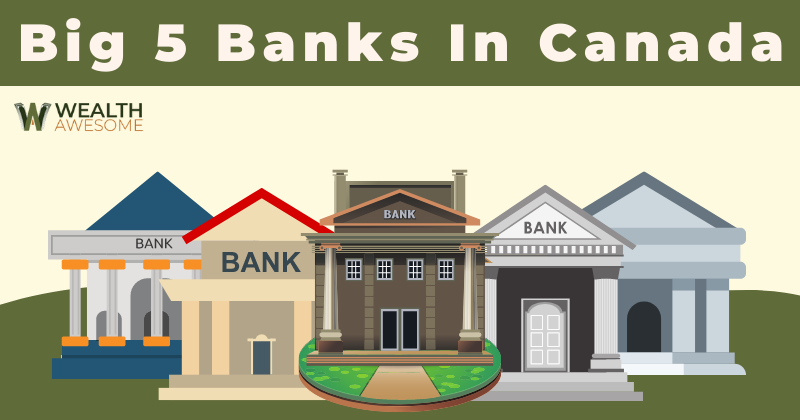
RBC, TD, Scotiabank, BMO, and CIBC make up the famous “big five” in Canada.
With trillions of dollars under their administration across the board, they are collectively a major force in North America.
With that said, many people are changing their banking habits recently to avoid fees and get more specialized services, especially with the rise of digital banks in the country.
You can read up on digital banks here on Wealth Awesome. Consider starting here:
